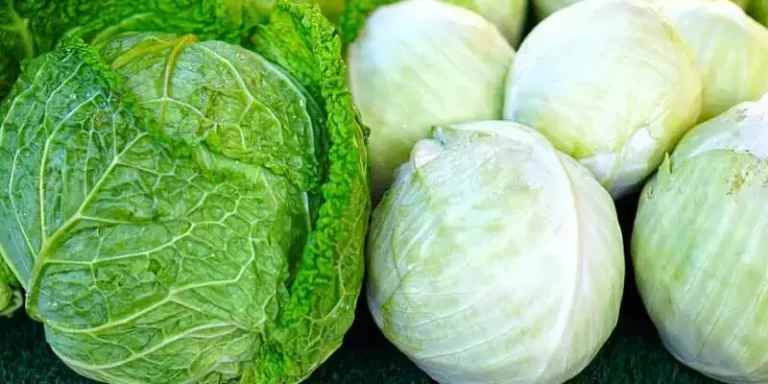Cabbage can be found in a variety of different cultures and cuisines around the world. Some dishes include boiled cabbage, cabbage soup, stuffed cabbage, sauerkraut, coleslaw, and kimchi.
Whether the cabbage is cut or whole, you may wonder how long the cabbage will last.
How Long Does Cabbage Last?
Cabbage is a hardy vegetable that can last for a long time.
At room temperature, the cabbage can last for about a week.
To keep them fresh longer, you’ll need to store them in the fridge. Cabbage can last 2 to 3 weeks when stored properly in the fridge. Although it’s best to eat it within a week or two for the best taste.
For the longest shelf life, cabbage can be stored in the freezer. Keeping them in the freezer will keep the cabbage fresh for up to 3 months.
Does Cabbage Go Bad?
Cabbage is one of the most popular vegetables among Americans. It is widely consumed in many forms – from pasta to salads, slaws, and soups.
Like most other vegetables cabbage does go bad. There are several factors that will cause the cabbage to go bad. Some of them include where the cabbage is stored, the temperature that it’s stored at, and if it is cut already.
Once the cabbage is harvested, the hotter the temperature, the quicker the cabbage will go bad. For that reason, it’s important to keep them in a cool and dry place.
The next thing is if the cabbage has been cut or sliced. When it’s cut, the cabbage tends to go bad quickly as the flesh is exposed to air and moisture.
How To Tell When Cabbage Is Bad?
When cabbage is bad, it means that the cabbage has been harvested, grown, and picked too soon. In addition to a few signs like wilted leaves and soft cores, there are also a few other ways to tell.
There are subtle signs of spoilage like staining of the outer leaves and an off-flavor. But in most cases, you can just smell the spoiled cabbage and it will be obvious.
However, you might not always want to smell your cabbages all day long so here are some other signs to be on the lookout for:
- Smells like ammonia or rotten eggs
- Small flies or beetles are swarming around your cabbage
- Mold on your cabbage
- Discolored leaves
- Brown spots
- Slimy texture
- Soft rotten spots on the stem
How To Store Cabbage
Storing At Room Temperature
When storing cabbage at room temperature, you should keep it in a cool, dry place. The best place for storing the vegetable should be in the pantry. This is where it’s usually cool, dry, and away from sunlight and heat.
Storing In Refrigerator
Cabbages whether it’s whole or cut can be stored in your fridge. For whole cabbage, you can keep them in the crisper drawer of your refrigerator.
Cabbage should not be stored with root vegetables like potatoes, carrots, and turnips because they will cause the cabbage to spoil more quickly.
For cabbages that have been cut, they should be stored in an airtight container or plastic bag to prevent them from oxidation.
Storing In Freezer
Freezing cabbage is another option for storage.
Storing cabbage in the freezer is a great way to use up your leftover produce. Cabbage will last for up to three months, which is long enough that it can be eaten during a time when you have some extra time on your hands.
How To Keep Cabbage Fresh Longer
You love cabbage but you know that it won’t keep long in your kitchen or fridge. So, what can you do to ensure that your cabbage lasts longer?
Here are a few easy tips on how to keep cabbage fresh longer:
- Store them in a cool, dry place away from light.
- Don’t put the cabbage in a plastic bag. Plastic traps moisture and makes it harder for the cabbage to breathe.
- Don’t wash the cabbages until about an hour before you intend to use them.
Related Questions
Can old cabbage make you sick?
In general, the answer to this question is yes. It can cause food poisoning if it has been left at room temperature for a long time before being stored and cooked. The longer it has been out of refrigeration, the greater the chance that it will make you sick (But not always).
Is the black stuff on cabbage mold?
The black stuff on cabbage is a fungal growth that is commonly found on the surfaces of vegetables. The black stuff on cabbage can be seen as early as the night before harvest, but it doesn’t always appear in noticeable amounts.
If it appears on your cabbage, remove the affected part and wash the remaining part.

